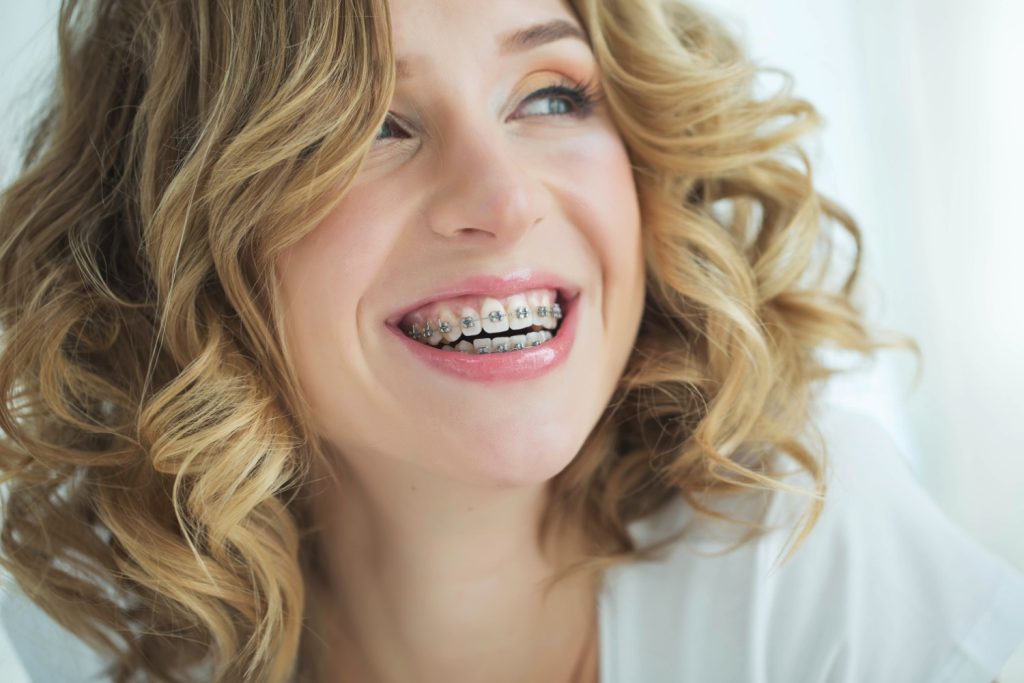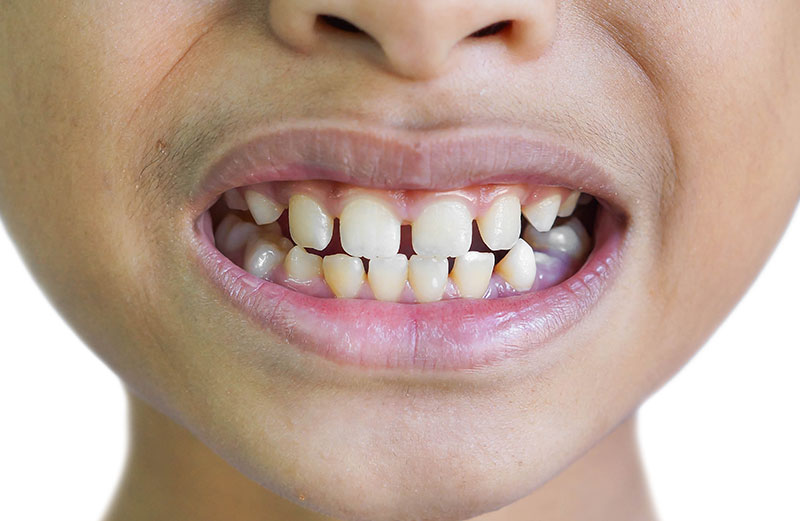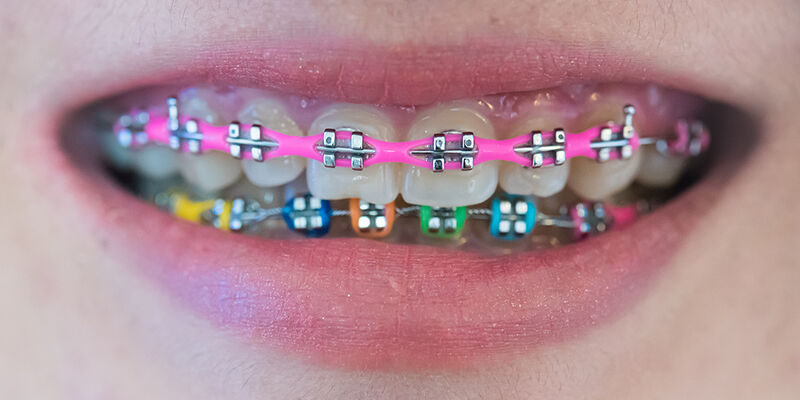Braces for teenagers

Orthodontic treatment during the teenage years can have a significant impact on dental health and overall confidence. Braces for teenagers are designed to address various orthodontic issues, including misaligned teeth, bite problems, and spacing issues. This comprehensive guide will explore the different types of braces available for teenagers, the benefits and considerations of orthodontic treatment during adolescence, the treatment process, and tips for maintaining oral health with braces.
Types of Braces for Teenagers
1. Traditional Metal Braces
Traditional metal braces are the most common type of braces for teenagers. They consist of metal brackets that are bonded to the teeth and connected by a thin archwire. Elastic bands, also known as ligatures, are used to hold the wire in place and can come in a variety of colors, allowing teenagers to personalize their braces.
Advantages:
- Effectiveness: Metal braces are highly effective in treating a wide range of orthodontic issues.
- Durability: They are made from high-quality stainless steel, making them durable and resistant to breakage.
- Cost-Effective: Traditional braces are often more affordable compared to other orthodontic options.
Considerations:
- Aesthetics: Metal braces are visible, which may be a concern for some teenagers.
- Comfort: Initial discomfort and irritation to the cheeks and lips are common but usually subside as the mouth adjusts.
2. Ceramic Braces
Ceramic braces are similar to traditional metal braces but use clear or tooth-colored brackets that blend in with the teeth. This makes them a more aesthetically pleasing option for teenagers who are self-conscious about their appearance.
Advantages:
- Aesthetic Appeal: Ceramic braces are less noticeable than metal braces.
- Effectiveness: They are effective in treating a variety of orthodontic issues.
Considerations:
- Cost: Ceramic braces can be more expensive than traditional metal braces.
- Fragility: The brackets are more prone to breaking compared to metal braces.
- Staining: The ligatures can stain easily if not properly cared for.
3. Invisalign
Invisalign uses a series of clear, removable aligners to gradually straighten teeth. The aligners are custom-made for each patient and are virtually invisible when worn.
Advantages:
- Aesthetic Appeal: Invisalign aligners are nearly invisible, making them a popular choice for image-conscious teenagers.
- Comfort: The aligners are made from smooth plastic, reducing the risk of irritation to the cheeks and gums.
- Convenience: Invisalign aligners can be removed for eating, drinking, brushing, and flossing, making oral hygiene easier to maintain.
Considerations:
- Discipline: Successful treatment with Invisalign requires wearing the aligners for 20-22 hours per day.
- Cost: Invisalign can be more expensive than traditional braces.
- Limited Use: Invisalign may not be suitable for severe orthodontic issues.
4. Lingual Braces
Lingual braces are similar to traditional metal braces but are placed on the back (lingual) side of the teeth, making them virtually invisible from the front.
Advantages:
- Aesthetic Appeal: Lingual braces are hidden behind the teeth, making them an excellent option for teenagers who want a discreet treatment.
- Effectiveness: They are effective in treating complex orthodontic issues.
Considerations:
- Comfort: Lingual braces can be more uncomfortable than traditional braces, especially during the initial adjustment period.
- Cost: Lingual braces are often more expensive than other types of braces.
- Maintenance: Maintaining oral hygiene can be more challenging with lingual braces.
Benefits of Braces for Teenagers
1. Improved Oral Health
Braces help to align teeth properly, making it easier to clean and maintain oral hygiene. Straight teeth reduce the risk of cavities, gum disease, and other dental problems.
2. Enhanced Aesthetic Appearance
Orthodontic treatment can significantly improve the appearance of a teenager’s smile. Straighter teeth and a well-aligned bite contribute to a more attractive and confident smile.
3. Corrected Bite Issues
Braces can correct various bite issues, such as overbites, underbites, and crossbites. Proper bite alignment improves chewing function, speech, and overall oral health.
4. Boosted Self-Esteem
Teenagers who are self-conscious about their teeth can experience a significant boost in self-esteem and confidence after orthodontic treatment. A beautiful smile can positively impact social interactions and self-image.
5. Prevention of Future Dental Problems
Addressing orthodontic issues during the teenage years can prevent more severe dental problems in the future. Properly aligned teeth reduce the risk of tooth wear, jaw pain, and other complications.
Considerations for Orthodontic Treatment in Teenagers
1. Timing
The ideal time for orthodontic treatment varies for each individual. However, most orthodontists recommend starting treatment between the ages of 12 and 16, when the majority of permanent teeth have erupted, and the jaw is still growing.
2. Commitment
Orthodontic treatment requires commitment from both the teenager and their parents. Regular orthodontic visits, proper oral hygiene, and adherence to the orthodontist’s instructions are essential for successful treatment.
3. Discomfort
It is common for teenagers to experience discomfort, especially after adjustments. Over-the-counter pain relievers, orthodontic wax, and rinsing with warm salt water can help alleviate discomfort.
4. Oral Hygiene
Maintaining good oral hygiene is crucial during orthodontic treatment. Teenagers must brush and floss regularly to prevent cavities, gum disease, and staining around the brackets.
5. Dietary Restrictions
Certain foods can damage braces, including hard, sticky, and sugary foods. Teenagers need to avoid these foods to prevent damage to the brackets and wires.
The Treatment Process
1. Initial Consultation
The process begins with an initial consultation with an orthodontist. During this visit, the orthodontist will evaluate the teenager’s teeth, discuss their goals, and determine the best treatment plan. X-rays, photographs, and impressions of the teeth may be taken to create a customized treatment plan.
2. Placement of Braces
Once the treatment plan is finalized, the orthodontist will place the braces. For traditional and ceramic braces, this involves bonding the brackets to the teeth and threading the archwire through them. For Invisalign, the first set of aligners will be provided, and instructions on how to wear them will be given.
3. Regular Adjustments
Throughout the treatment, the teenager will need to visit the orthodontist regularly for adjustments. These appointments are typically scheduled every 4 to 6 weeks. During these visits, the orthodontist will tighten the wire, replace elastics, and make any necessary adjustments to ensure the teeth are moving as planned.
4. Maintaining Oral Hygiene
Maintaining good oral hygiene is crucial during orthodontic treatment. The orthodontist will provide specific instructions on how to care for the teeth and braces. This includes brushing and flossing techniques, as well as recommendations for orthodontic-specific oral hygiene products.
5. Completion of Treatment
Once the treatment is complete, the braces will be removed, and the orthodontist will clean the teeth. Impressions will be taken to create a custom-made retainer.
6. Wearing a Retainer
Wearing a retainer is a critical step in maintaining the results of the treatment. The orthodontist will provide a custom-made retainer and give instructions on how often to wear it. Initially, the retainer may need to be worn full-time, but over time, the teenager may transition to wearing it only at night.
Tips for Teenagers with Braces
1. Maintain Good Oral Hygiene
Brushing and flossing regularly is essential for preventing cavities, gum disease, and staining around the brackets. Using an orthodontic toothbrush, interdental brushes, and fluoride mouthwash can help maintain oral hygiene.
2. Avoid Certain Foods
To prevent damage to the braces, teenagers should avoid hard, sticky, and sugary foods. This includes items like popcorn, nuts, chewing gum, and candy.
3. Wear a Mouthguard
For teenagers involved in sports, wearing a mouthguard is essential to protect the braces and teeth from injury.
4. Follow Orthodontist’s Instructions
Adhering to the orthodontist’s instructions, including wearing elastics as prescribed and attending regular appointments, is crucial for successful treatment.
5. Use Orthodontic Wax
Orthodontic wax can help alleviate discomfort caused by brackets and wires. Applying wax to the areas that cause irritation can provide relief.
6. Stay Positive
Orthodontic treatment can be challenging, but staying positive and focusing on the end result—a beautiful, confident smile—can help teenagers stay motivated throughout the process.
Conclusion
Braces for teenagers offer a valuable opportunity to correct orthodontic issues, improve oral health, and boost confidence. Understanding the different types of braces available, the benefits and considerations of treatment, and the treatment process can help teenagers and their parents make informed decisions about orthodontic care. With proper care, commitment, and guidance from an experienced orthodontist, teenagers can achieve a healthy, beautiful smile that lasts a lifetime.
Related to read:
Best Oral Hygiene Practices For Optimum Oral Health.
How to Whiten Teeth Naturally?
How to keep your gums healthy and disease-free?
References
To ensure the information provided is accurate and up-to-date, the following sources were referenced:
- American Dental Association. (n.d.). Plaque and Tartar. Retrieved from ADA website
- Mayo Clinic. (n.d.). Dental Plaque. Retrieved from Mayo Clinic website
- National Institute of Dental and Craniofacial Research. (n.d.). Periodontal (Gum) Disease. Retrieved from NIDCR website








